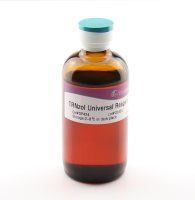Gene Cloning and Expression Profiling by Rapid Amplification of Gene Inserts with Universal Vector Primers
互联网
646
Isolation of a full-length gene and analysis of expression profiling are fundamental and challenging in the current molecular biology. A great deal of effort is needed to detect unknown gene sequences by screening cDNA or genomic libraries by nucleic acid or protein probes. As the complete genome sequences of many organisms have been reported, this has raised the most challenging issue that how global gene expression patterns can be detected. Recently, various PCR methods have been developed for cloning of unknown genes and analysis of expression profiling (1 -10 ). Several PCR-based strategies such as iAFLP (introduced amplified fragment length polymorphism) and TOGA (total gene-expression analysis) are currently available for global gene-expression analysis (8 -10 ). An outline of gene cloning and expression profiling by anchored-PCR with vector primers is illustrated in Fig. 1B . In this chapter, we focus on how to use a gene library and anchored-PCR for cloning unknown gene sequences (see Fig. 1 A ). Friedmann et al. (1 ) first used PCR to screen λgt11 library with two gene-specific primers. This protocol can be effectively used to isolate a particular DNA fragment between two specific primers or to generate nucleic acid probe from cDNA libraries. The unknown sequences flanking the fragment between the two specific primers can not be amplified by this method.


Fig. 1. The scheme for Gene Cloning and Expression Profiling by amplification of gene inserts from a library. (A ) Gene cloning by rapid amplification of gene ends (RAGE). If a plasmid library is used, a restriction enzyme rarely within gene inserts such as NotI may be selected to linearize the recombinant DNA. A phage library can be directly used for PCR. Here is an example for cloning cDNA ends from a phage library (λgt11). 5′-VP is λgt11 forward primer (5′-GACTCCTGGAGCCCG-3′). 3′-VP: λgt11 reverse primer (5′-GGTAGCGACC-GGCGC-3′). 5′-GSP (gene specific primer): 5ASPR with EcoR1 restriction site (5′-AGA-CTGAATTCGGTACCGGCGGTACTATCGCTTCC-3′). 3′-GSP: 3ASPB containing BamH1 site (5′-CTGATGGATCCTGGC AGTGGCTGGACGC-3′). (B ) Expression profiling by TOGA. Poly(A ) RNA isolation, cDNA synthesis and library construction were carried out as described previously (10 ). The 3′ MspI-NotI fragments were directionally cloned into ClaI-NotI cleaved plasmid pBC SK+(Stratagene) in an orientation antisense to its T3 promoter. After cleavage with Msp I to linearize insert-containing plasmids, antisense transcripts were produced with T3 RNA polymerase. The cRNAs were reverse transcribed into cDNA by using 5P1 [a 5′ vector primer including a 4-nt restriction endonuclease cleavage site (4-nt REC) derived from the ligation of the vector with the 5′ insert]. PCR1 was performed with primers 5P2 N1 [a 5′ vector primer plus the 4-nt REC and the first adjacent nucleotide (N1=A,G,T,C) of the insert at the 3′ end ] and 3P (a 3′ vector primer). This step subdivides the cDNA species into four pools. PCR2 was carried out with 3PF (a fluorescent 3′ vector primer) and 5P2 N14 [(a 5′ vector primer containing the 4-nt REC and four 3′ degenerate nucleotides (N1-4 , N=A,C,G,T), which are the adjacent nucleotides of the insert]. This amplification subdivides the input species into 256 subpools for electrophoretic resolution.









